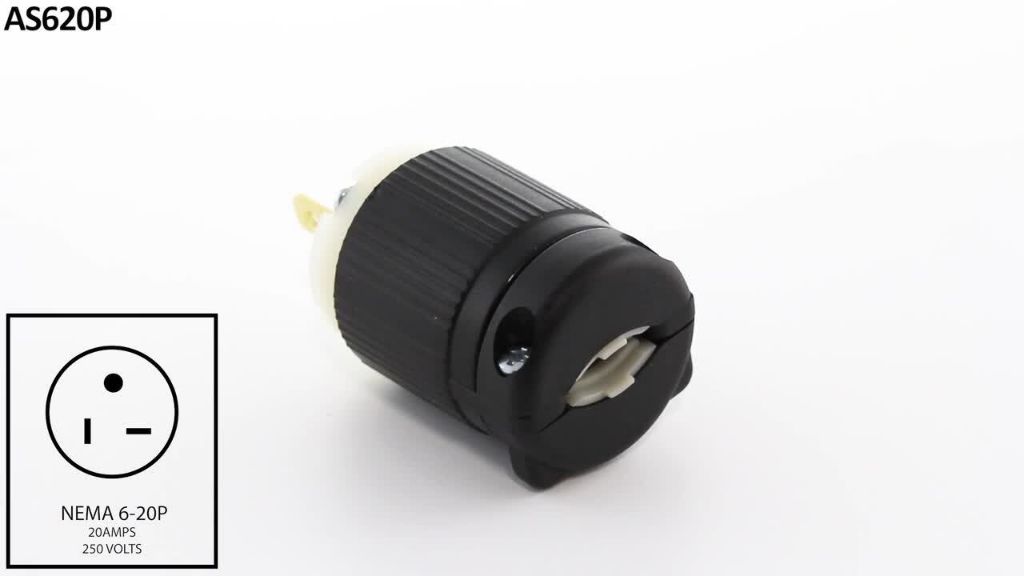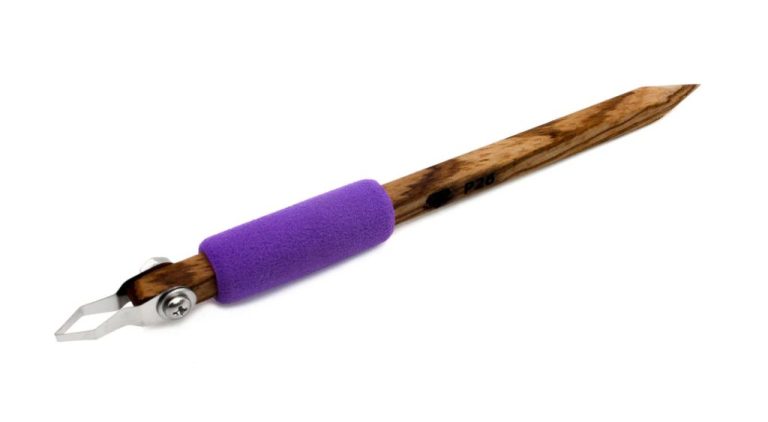What Size Wire For A Nema 6-20 Outlet?
NEMA 6-20 outlets are 250-volt receptacles that provide 20 amps of current. They have a unique L-shaped neutral slot and a T-shaped hot slot to prevent accidental insertion of lower voltage plugs. NEMA 6-20 outlets are commonly used for powering large appliances like air conditioners, ovens, ranges, and other heavy-duty equipment that requires 20 amps at 240 volts.
These outlets provide more power than standard 125-volt household receptacles and allow large appliances to operate safely on dedicated circuits. The shape and size of NEMA 6-20 outlets prevent compatibility with lower amperage plugs, reducing the risk of overloading and fire from incorrect connections.
Amp and Voltage Ratings
NEMA 6-20 outlets and plugs are rated for 240 volts and 20 amps of current. This is specified in the NEMA 6-20 designation, where the “6” indicates 250 volts and the “20” indicates 20 amps 1. The voltage rating is slightly higher at 250 volts to allow for fluctuations in supply voltage. At 240 volts, the NEMA 6-20 can deliver up to 4,800 watts (240V x 20A = 4,800W) safely. This high power output makes the NEMA 6-20 well-suited for larger, high-draw appliances.
Wire Size Options
When wiring a NEMA 6-20 outlet for 240 volt, 20 amp service, the most commonly used wire sizes are 8 AWG and 6 AWG copper wire.
The National Electrical Code (NEC) specifies that 8 AWG copper wire is suitable for carrying up to 30 amps, while 6 AWG copper can handle up to 40 amps. Both wire sizes exceed the required capacity for a 20 amp circuit.
8 AWG wire has a diameter of 0.1285 inches and is rated to handle a maximum temperature of 90°C. At 75°C, its ampacity is 30 amps. This provides a safety margin above the 20 amp circuit rating.
6 AWG wire has a diameter of 0.162 inches and can operate at up to 90°C. Its ampacity at 75°C is 40 amps. This provides an even greater capacity buffer for a 20 amp circuit.
While 12 AWG wire could technically be used, it is undersized for this application. The NEC recommends 8 AWG and 6 AWG as standard sizes for 20 amp, 240 volt circuits requiring NEMA 6-20 outlets.
8 AWG Wire Specs
According to NEC, the ampacity rating of 8 AWG copper THHN/THWN-2 wire is 55 Amps at 90°C (Modern Power and Lighting). This ampacity applies to other common insulation types like XHHW/XHHW-2, RHH/RHW-2, and USE-2 as well. The 8 AWG conductor has a diameter of 0.1285 inches and is typically made up of 19 stranded copper wires with PVC insulation 0.03 inches thick (Wire and Cable Your Way).
8 AWG THHN wire costs around $0.77 per foot and is commonly used for 50 to 60 Amp subpanels, RV hookups, welder circuits and other high amperage branch circuits (OnlineWireStore). The insulation thickness and high strand count make it very flexible while still safely handling over 50 Amps.
6 AWG Wire Specs
6 AWG wire is commonly used for 50-55 amp applications. It has the following key specifications:
- Ampacity: 6 AWG copper wire has an ampacity of 55 amps based on the National Electrical Code (NEC) guidelines for sizing copper wire. This means it can continuously carry up to 55 amps.
- Insulation: 6 AWG THHN wire has a PVC insulation thickness of 0.030 inches and is rated for wet locations, high temperatures, and protection from physical damage.
- Cost: 6 AWG building wire costs approximately $0.55-0.65 per foot for THHN insulation.
The thicker gauge and ampacity rating make 6 AWG an ideal choice for higher current branch circuits, subpanels, HVAC equipment, kitchen appliances and outlets like NEMA 6-20.
According to Wire and Cable Your Way, 6 AWG THHN wire has a conductor cross sectional area of 13.3 mm2.
Recommended Wire Size
The recommended wire size for a NEMA 6-20 outlet is 8 AWG copper wire. This gauge provides ample capacity for the 20 amp circuit while remaining easy to work with. According to the electrical code, 8 AWG copper wire can safely support a continuous load of 25 amps and is rated for 30 amps maximum.
6 AWG copper wire can be used for longer wire runs where voltage drop becomes a concern. The larger diameter of 6 AWG reduces resistance, helping maintain voltage over longer distances. However, for typical residential wiring within 100 feet, 8 AWG is sufficient. Using a larger 6 AWG wire may only provide a marginal improvement in voltage drop but adds expense and is more difficult to install.
The National Electrical Code permits either 8 AWG or 6 AWG for a 20 amp circuit. Ultimately the choice depends on the wire run length and cost considerations. For most applications, 8 AWG wire will meet code and provide a safe, robust connection.
Using Conduit

Installing the wiring for a NEMA 6-20 outlet in conduit provides several advantages. Conduit protects the wiring from damage and keeps it isolated from contact with other building materials. It also allows you to more easily pull and replace the wiring if needed in the future. Using conduit is required by the National Electrical Code (NEC) in some cases, such as where wiring is run through concrete.
When installing a NEMA 6-20 outlet, the NEC recommends using the following minimum conduit sizes:
- 1/2″ conduit for individual branches with three or fewer wires
- 3/4″ conduit for individial branches with four to six wires
- 1″ conduit for more than six wires in a single conduit run
The conduit size needs to be large enough to accommodate the wire gauge required. For example, 6 AWG wire would require a minimum of 3/4″ conduit. Going up one conduit size allows for easier pulling and reduces friction when installing the wires. Many electricians recommend 1″ conduit for most NEMA 6-20 outlet installations.
PVC and metal conduit are both suitable options for NEMA 6-20 outlets. PVC is lighter and usually more affordable, while metal provides greater durability and protection. The environment where the conduit will be installed is a key factor when choosing the material.
Installation Considerations
Proper installation of a NEMA 6-20 outlet is critical for safety and performance. Here are some key factors to keep in mind:
Make sure all connections are tight and secure according to the manufacturer’s torque specifications. Loose connections can lead to overheating and potential fires. Refer to the installation guide for torque requirements.1
Always connect the grounding wire to ensure the outlet is properly grounded. This provides an safe path for electricity in the event of a short circuit or voltage spike.
Calculate the box fill to ensure the electrical box is large enough for the number of wires. An overloaded box can lead to overheating. Generally a deeper 4×4 inch box is recommended for a NEMA 6-20 outlet.
Follow all local electrical codes and permit requirements for new outlet installations. Use a qualified electrician if you are not experienced with electrical work.
Cost Comparison
When deciding between 8 AWG and 6 AWG wire for a NEMA 6-20 outlet, one of the main considerations is cost. The price per foot is a key factor when purchasing the amount of wire needed for the installation.
8 AWG THHN wire costs approximately $1.32 per foot. It can also be purchased at hardware stores like Home Depot for around $11.76 for 100 feet.
6 AWG THHN wire is more expensive at approximately $1.92 per foot. At Home Depot, 100 feet of 6 AWG THHN can cost $38.97, making it around 3 times more expensive than 8 AWG per foot.
The 6 AWG wire has a slightly higher capacity for electrical loads, but the 8 AWG wire is generally sufficient for most 6-20 outlet needs. When deciding, calculate the wire length required and weigh the costs against the electrical demands of your specific project.
Conclusion
When wiring a NEMA 6-20 outlet, the recommended wire size is 6 AWG. This provides enough ampacity for the 20 amp circuit while remaining cost effective. 6 AWG wire is able to safely support over 30 amps, exceeding the outlet’s 20 amp rating. The thicker 8 AWG wire may seem appealing for its higher ampacity, but proves overkill for most residential uses.
In summary, 6 AWG wire offers the ideal balance of safety, cost and performance for a NEMA 6-20 outlet installation. It meets code requirements while avoiding the diminishing returns of thicker wire sizes. When paired with proper conduit and installation techniques, 6 AWG wire provides a robust wiring solution at reasonable expense. For a safe, reliable and cost-conscious NEMA 6-20 outlet wiring, 6 AWG is the recommended wire size for most homes and applications.




